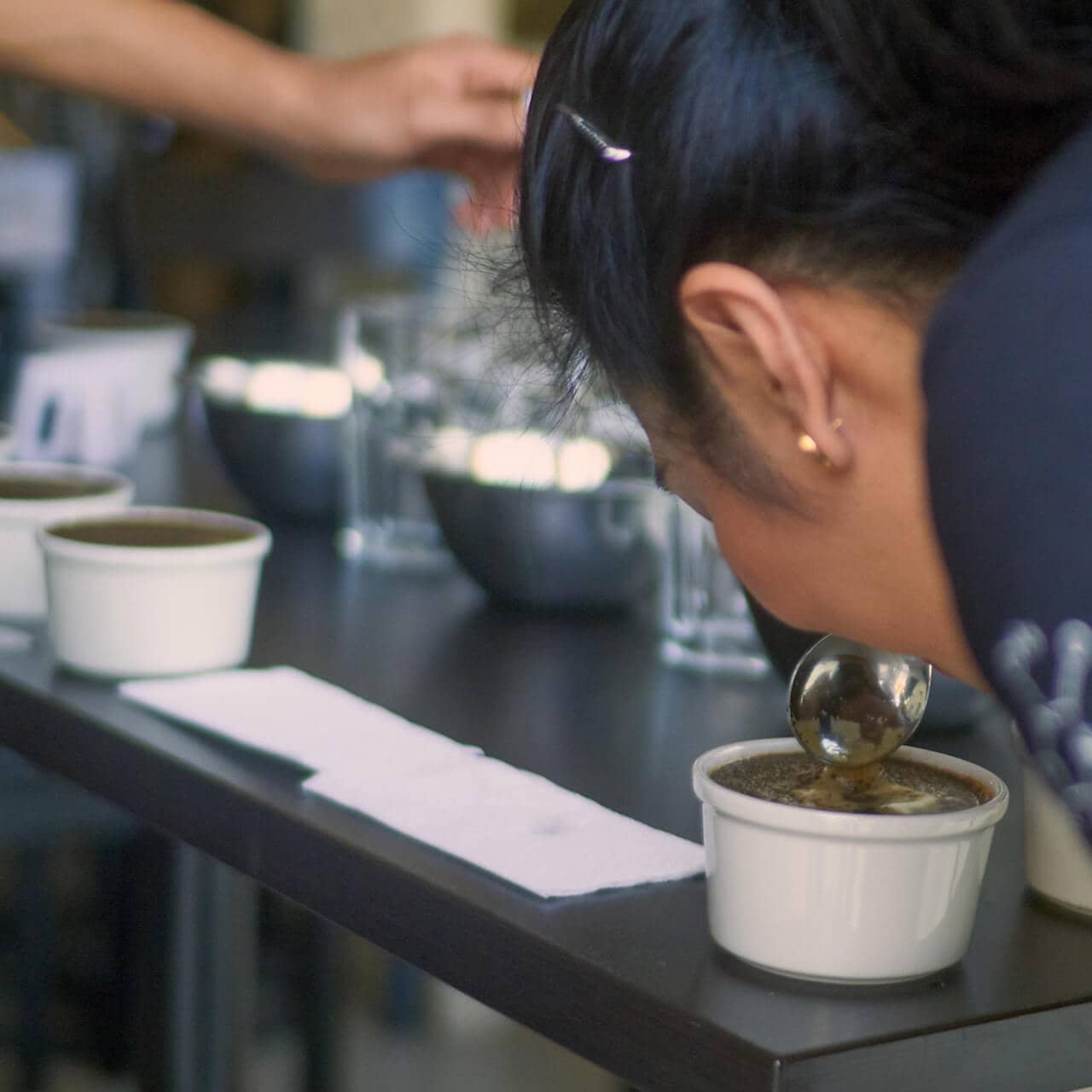Drinking coffee is easy. Everyone has their individual ritual. Some of us just want to get going in the mornings, others want to overcome the sleepiness after lunch. And only when the coffee does not taste as usual, we realize that there is a variety in taste.

Coffee tasting (cupping or cup tasting) is more challenging, a lot of fun, and greatly increases the appreciation for good coffee.
Let’s start with the basics. For the tasting you use two of your senses: As a beginner, try to separate the two senses from each other. That makes the tasting much easier. So, let’s start with the tongue. Your tongue can sense four main classes of taste: sour, sweet, bitter, and salty, as well as savory (umami). Perhaps, associations with “chocolate”, “caramel” or “berries” also come to mind. Yet, these do not evolve on your tongue but in your olfactory bulb in your nasal cavity.
Even smelling
requires practice.
photo:
La Chacra D’dago

Broadly speaking, it is all about sweetness, acidity, mouthfeel, balance, and taste. Professional coffee tasters take more criteria into consideration depending on the purpose of the tasting (green coffee buying, roasting, blending etc.). In this context though, we can focus on the main characteristics.
It is all about the type and amount of acidity the coffee contains. For the non-expert, acidity often has negative connotations. But think of an apple: It is a great example for positive acidity, freshness, and juiciness. And the same applies to coffee. To be honest, the evaluation is quite hard for beginners. But if a coffee tastes really sour you can be sure: That is not a good sign.
What actually is “mouthfeel”?
photo:
La Chacra D’dago

What actually is “mouthfeel”?
photo: La Chacra D’dago
Sounds weird, but it isn’t. Does the coffee feel light? Gentle? Or rich and creamy? Coffees of lower quality are often heavy and lack the fine acidity – that is not very enjoyable.
Think of a composition: Is one instrument unpleasantly loud? Regarding coffee that means: Is one taste nuance too dominant? Or is the taste round, balanced, and harmonic?
You can taste balance. The question is: “How?”.
photo:
cottonbro von pexels

You can taste balance. The question is: “How?”.
photo: cottonbro von pexels
Describing the taste does not mean describing every single aroma. It is more about a general impression. When you first start as a coffee taster you have quite a challenging task. Somehow, all coffees taste different, but you cannot really put it into words. But don’t worry, it is only a matter of practice.
Enough about the theory. In the next part you will learn all about the equipment you need for a little „house-cupping“ and how to get started.
Are you ready to try it yourself? For the beginning, you can just order two different coffees to test them against each other. For example, two of our single origins to challenge (and indulge) your tongue and nose.
Phone +49 (0) 40 753 04 – 485
Fax +49 (0) 40 753 04 – 492
e-mail: info@mounthagen.de
